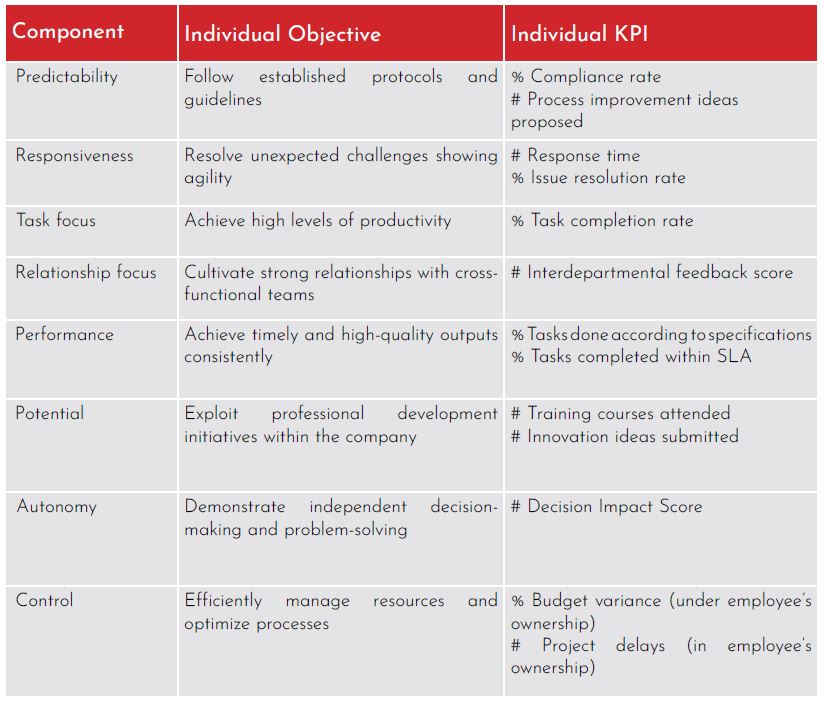In Pursuit of Holism: Best Practices for Employee Performance Management

Image Source: Freepik
Recent decades’ examination of labor productivity trends indicates a general decline in measured productivity growth. This means that workers produce less in more time over the long term.
And the worst part is, workers are somehow becoming more exhausted and burnt out. This challenge is exacerbated by the fact that in the era of constant change, most workers do not fully understand what is expected of them. In today’s fast-paced and complex work environment, the concept of a “top performer” has become increasingly elusive, leaving many individuals feeling overwhelmed in trying to understand and achieve this seemingly impossible goal.
Right now, workers are failing—and they barely understand why and by what standards.
Improving employee performance management practices alone would not solve the global issues surrounding mental health and productivity nor the widening skill gap. What it can do, however, is bring clarity and structure to the chaotic workplace landscape, offering a framework for understanding and addressing some of these challenges.
Here are a few best practices to ensure that such appraisal systems are balanced, encouraging, and—ultimately—successful.
Balance Competing Priorities
Businesses must balance competing priorities in order to succeed, that’s a given. In order to ensure the consistency and fairness of evaluations when business priorities are translated into key performance indicators (KPIs) for employees, leaders need to make sure that they know where their priorities lie and what they’re willing to compromise on. These decisions and trade-offs will ensure that proper weight is allocated to KPIs and employee goals.
Here are some common organizational trade-offs businesses face that—if not clarified—might result in flawed employee performance management practices.
- Predictability vs Responsiveness: Organizations must balance the need for stability and adherence to established plans with the demand for adaptability and quick reactions to changing circumstances.
- Task Focus vs Relationship Focus: Organizations must decide whether to prioritize efficiency, productivity, and achieving specific tasks or emphasize the cultivation of strong interpersonal connections and collaborative relationships with stakeholders and team members.
- Performance vs Potential: Organizations must decide whether to evaluate employees based on their current performance or their potential for growth and development. Focusing on performance can help identify top performers and reward them accordingly, but it may also overlook employees who have the potential to excel with additional training and support.
- Autonomy vs Control: Organizations must balance the need to give employees autonomy and independence with the importance of maintaining control and oversight. Allowing employees to make decisions and take ownership of their work can increase motivation and job satisfaction, but it may also lead to inconsistency and a lack of standardization and maybe even inadequate first deliverables during the learning curve.
Figure 1 illustrates how the trade-offs can be monitored and measured using the appropriate KPIs.

Figure 1. Objectives and KPIs for Common Organizational Trade-Offs
Read More >> Internal Communication Strategy: Guiding Principles and Methods
Face the Inevitability of Subjectivity
When measuring employee performance, we typically look at metrics such as the quantity, quality, and timeliness of work. However, we often invest too much effort in avoiding subjectivity during evaluation, which might lead to employees feeling like they are just “numbers” and that the diversity of personalities and individual strengths do not matter as everyone is evaluated based on the same numerical standards. Moreover, organizations should not forget that there is so much more to people than their achievements. Embracing subjectivity in a balanced way will lead to a more relationship- and communication-based performance evaluation without neglecting objective performance metrics.
The KPI Institute recommends complementing quantifiable KPIs by assigning competencies and desired behaviors to objectives. Defining specific competencies for each role involves considering both internal factors (e.g. job descriptions and discussions with employees in those positions) and external factors (e.g. competency catalogs). Meanwhile, desired behaviors are shaped internally by the company’s vision and organizational values and externally by the socio-cultural context, demographics, and examples provided by professional associations or publications in the field.
Figure 2 shows how a goal can be measured through objective metrics (Individual KPI) with subjective components (Desired Behavior).

Figure 2. Objective Metrics With Subjective Components
Offer Stability and Consistency
Frequent changes to expectations and evaluation criteria lead to ambiguous definitions of top performance, sowing confusion and frustration among employees who struggle to discern what is genuinely valued and rewarded. Consequently, performance reviews may become inauthentic or—worse—employees may lose trust in the evaluation process, undermining its credibility. Employees thrive in an environment where they understand expectations and can rely on stable guidelines for evaluation.
Thus, it is critical to adhere to an employee performance management system (EPMS) that is supported by all the necessary tools, processes, training, and monitoring and review procedures. This approach benefits both managers and employees as it ensures clarity in performance evaluation, from setting inclusive performance standards to linking the results to talent management, which also involves providing employees with development opportunities. Consistency in these practices fosters a sense of security and trust among employees and a culture of continuous growth and employee engagement.
Read More >>Empathy: Overrated Concept or Powerful Business Skill?
Employee performance management need not be perfect. Instead, organizations must aspire to align it harmoniously with the company’s values. Through a holistic approach to employee performance management, organizations will be more capable of balancing the needs of the business with the realities of life.
To gain a deeper understanding into implementing a comprehensive EPMS, enroll in The KPI Institute’s Certified Employee Performance Management Professional course.
For more articles on employee performance management, click here.
***********
About the Author

Bori Péntek, a management consultant specializing in organizational development and human resource management, uses an approach that merges strategic planning and performance management at the organizational level with responsible HR strategies. With diverse experience in recruitment, HR, and operations management across sectors like sustainable construction, research, and instructional design, Bori is passionate about fostering employee well-being through conscious leadership and internal corporate social responsibility.
Editor’s Note: This article was originally published in the print edition of Performance Magazine Issue No. 28, 2024 – Employee Performance Edition.

